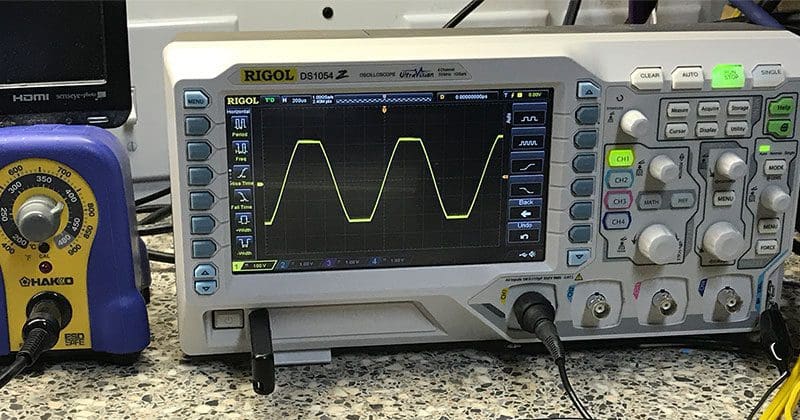We are at our second-to-last article in our car audio amplifier specification series and this time, we are going to talk about Class AB amplifier crossover distortion. This distortion has nothing to do with the high- or low-pass filters built into your amplifier; it’s a problem with the very concept of the Class B amplifier topology. Don’t fret — we’ll explain what causes it and how it’s minimized to a level of near inaudibility.
How Do Class AB Amplifiers Work?
Before we can explain what crossover distortion is, you’ll need a basic understanding of how the output of a Class AB amplifier works. In a Class A amplifier, a single transistor (or bank of transistors) takes care of controlling the voltage going to the speaker. When no signal is being produced, the transistor is set at a 50% output level (and gets VERY hot). As the alternating current (AC) from the signal source passes through the amp, the output voltage goes up and down until it reaches the maximum or minimum possible level associated with the transistor being off or at its maximum output level.
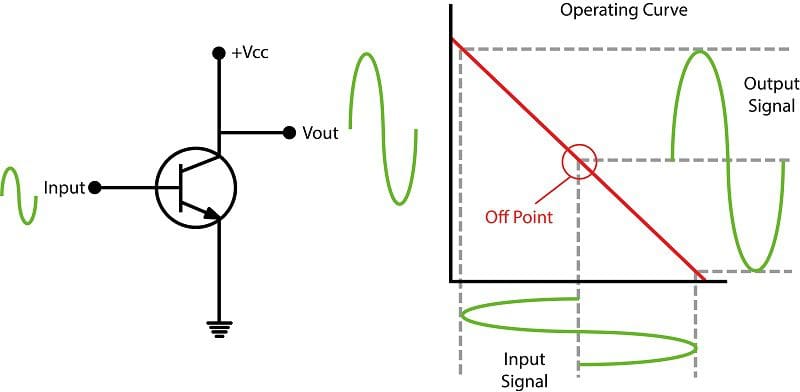
In a Class B amplifier, we use one transistor to handle the positive half of the waveform and a second transistor to handle the negative half. The primary advantage is that when there is no signal present, both devices are almost completely turned off and very little power is consumed.
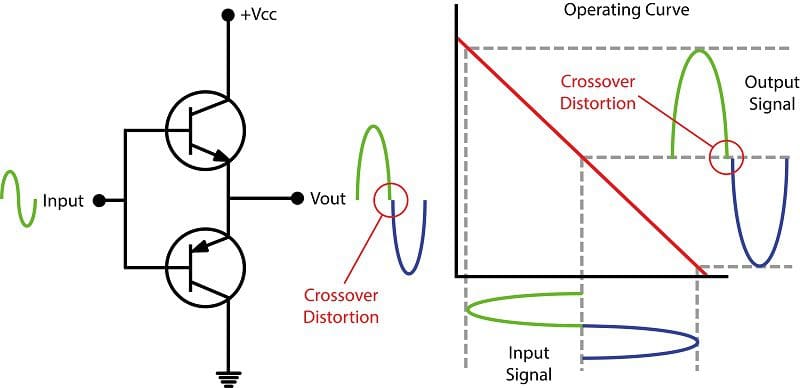
The Class B topology is where our crossover distortion problem arises. As the audio signal swings from positive to negative, it needs to switch from one device to the other without any issues. It’s at this point where the signal crosses over from one device to the other that problems can happen — hence the name, crossover distortion.
Amplifier designers who truly care about the sonic qualities of their products know how to handle this transition and can effectively eliminate crossover distortion by biasing the positive and negative output devices into their active regions. While this does create a little more heat, it reduces distortion dramatically. This is where the Class A part of an AB amplifier comes from: The devices are turned on a little bit (like a Class A amp), but for high-level signals, act in a Class B configuration.
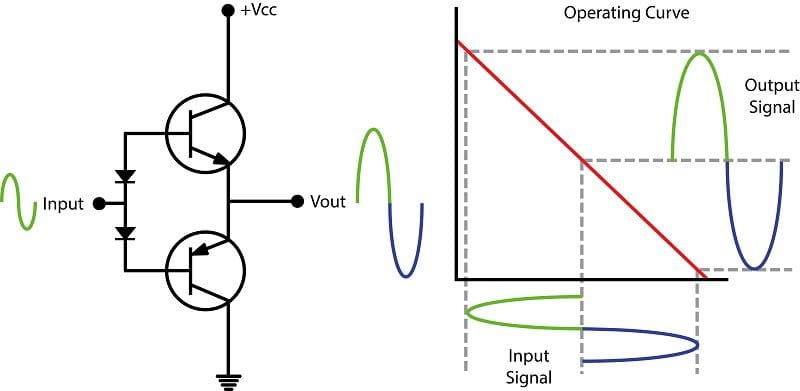
Why Does Crossover Distortion Matter?
At low output levels, even in moderate-quality Class AB amplifiers, crossover distortion is more prevalent than when an amplifier is producing very low amounts of power. More accurately, the effect of crossover distortion decreases as the output level increases.
Let’s look at the distortion characteristics of three different amplifier topologies to gain a better understanding of that statement. Up first is our truly outrageous low-quality four-channel amplifier. This workhorse of mediocrity has served us well through this series in explaining the kind of harmonic distortion versus its output level.
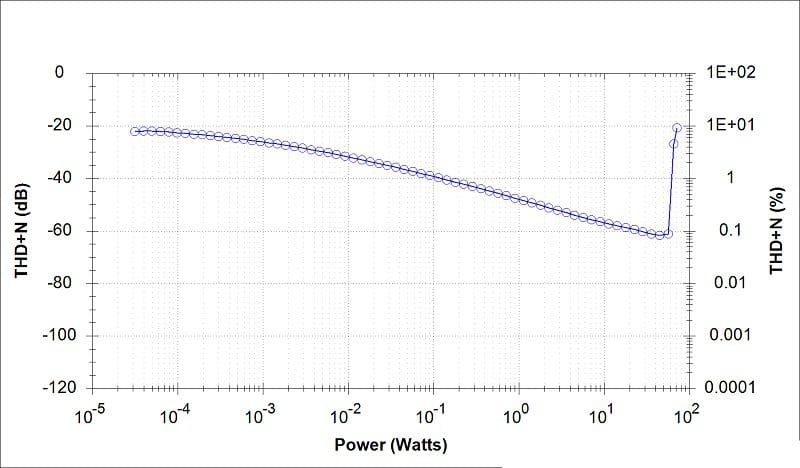
For a stark and dramatic contrast, we’ll switch to our high-end amplifier. This amplifier is unique in that it uses a high-bias design intended specifically to reduce crossover distortion in the transition between the positive and negative output devices. The graph below shows the distortion of 0.09% versus the output level.
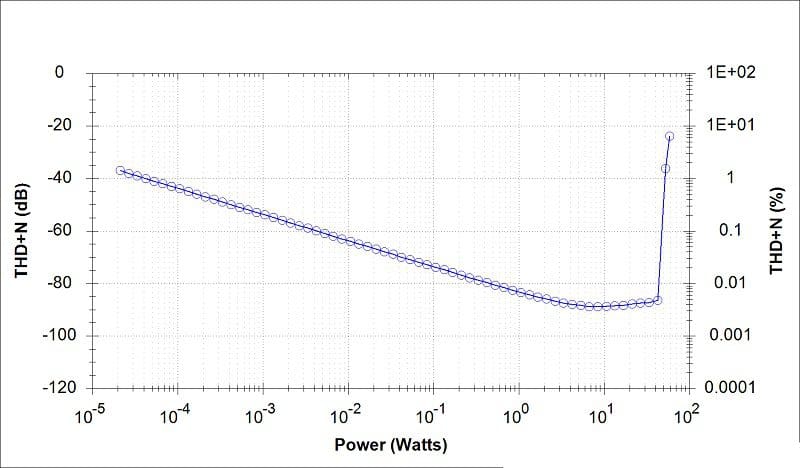
Choosing the Right Amplifier for Your Audio System
If the goals for your audio system are world-class performance, and you intend to use Class AB amplifiers, you can reduce the effects of crossover distortion by matching the power requirements of your speakers with amplifiers that will operate higher in their output range. For example, if you want a 150-watts-per-channel amp for your mid-bass drivers, you may only need a 50-watt amp for your midrange speakers and a 10-watt amp for your tweeters to achieve the same acoustic output level. BestCarAudio.com published an article on speaker power handling that explains why.
While you can’t always choose high-quality amplifiers with extremely low power levels, you can minimize the effect of crossover distortion by not using a monster amp on your tweeters. Your local specialist mobile enhancement retailer would be happy to design and install an amazing car audio system upgrade — drop by and talk to one of their Product Specialists today!
This article is written and produced by the team at www.BestCarAudio.com. Reproduction or use of any kind is prohibited without the express written permission of 1sixty8 media.
